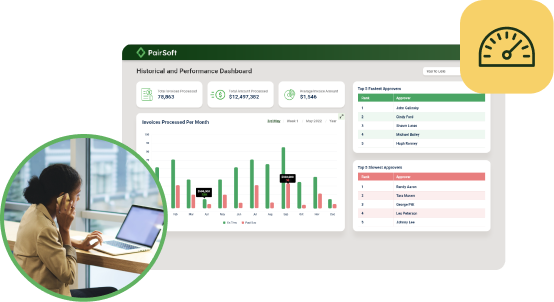Running a business smoothly and efficiently starts with the back office. Departments like accounting and administration support are the more visible aspects of your business; therefore, it’s imperative to optimize bookkeeping, record management, and other behind-the-scenes operations. But you can’t implement performance-boosting strategies unless you know your actual performance. You need to have a deep understanding of the back-office operation, and you can do this by keeping an eye on the following metrics.
Paper expenses
The first approach to measure back-office efficiency is to evaluate how much you’re spending on paper. Calculate your annual expense on things like copy paper, printer ink, folders, staples, and paper clips. You should also factor in the cost of file cabinets and archive rooms that store all your documents. This includes both the upfront cost and the cost of the real estate they occupy yearly, which you can calculate using the equation below.
Number of filing cabinets × square feet × cost per square foot = annual cost
The total figure should give you an in-depth look at your paper-related costs. Although the numbers may seem inconsequential compared to other costs, paper is a huge source of bottlenecks. So, if your company is spending an obscene amount of capital on paper, it may indicate your back-office processes are not optimized. Moving to a digital and paperless system can pay dividends in the long run.
Document management costs
In addition to paper expenses, a huge expense may also be going into manually handling documents. Track the time (in hours) your employees spend on data entry, indexing documents, and retrieving files on a weekly basis. It may be difficult to get an exact number, so have your staff fill out qualitative surveys to estimate time spent on paperwork.
Then, multiply this figure by the average hourly wage of your back-office staff. This gives you the weekly total of how much money you waste on document management and highlights opportunities for improvement. Costs may vary between different operations, but if your company is losing thousands of dollars a week on paperwork, it may make sense to implement a more efficient alternative. For instance, if a large portion of your staff’s time is consumed by data entry, consider opting for a cloud-based system with robust document capture technology.
Purchase order processing rates
Another measure of efficiency is how quickly your company can bill customers. Take a look at your current purchase order processes. Does it take several days for orders to be approved? Are accounting staff spending hours manually entering orders into the database? If you answered yes to both, it means you’re waiting longer to get paid.
The time-to-bill process should be as short as possible. From the moment an order is received, it should be processed by the system, verified, sent to shipping, and approved for billing in minutes. Workflow automation tools make this possible by routing documents where they need to be at the right time. This way, back-office staff never have to physically deliver orders to managers and shipping coordinators, resulting in happier customers and faster cash flow.
Late payments
The best indicator for measuring the efficiency (or inefficiency) of your accounts payable department is the number of late payment fees. Every month, calculate the percentage of invoices that missed the deadline. Next, add any late payment fees you’ve incurred to get the hard costs.
Increased losses from late payments suggest AP processes, from procurement to approvals to payment, are slow and poorly coordinated. It also means you’ve tarnished supplier relationships and missed important discounts — a serious hit to your bottom line. So generally, you’ll want to keep late payment figures as close to zero as possible.
If you need a powerful solution that eliminates these inefficiencies, a cloud-based document management system like PairSoft is the answer. It has cutting-edge transaction automation features that ensure you pay invoices on time. It even lets you set email alerts so that back-office staff know what they’re supposed to do and when to do it.
When you’ve determined what’s tying up your back-office processes with these metrics, call PairSoft. We’ll customize a paperless system that significantly increases your company’s efficiency. Schedule a free personalized demo today to learn more.







